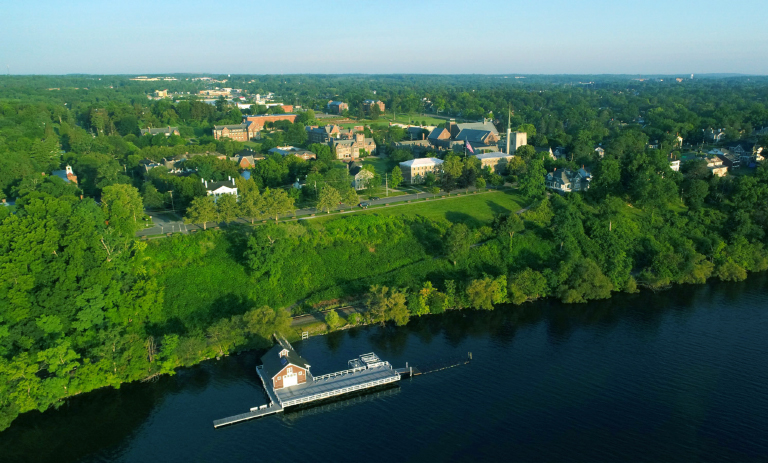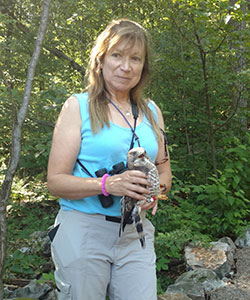
Lives of Consequence
Laurie Goodrich '77

Sarkis Acopian Director of Conservation Science, Hawk Mountain Sanctuary Association
For three decades, Laurie Goodrich has studied and protected birds of prey at Hawk Mountain Sanctuary Association in Kempton, Pa. While she was fond of bird walks and books about birds when she was a young girl, it was her time at Hobart and William Smith that shaped her career path and eventually led her to the top of the mountain.
Goodrich considered majoring in geology, until a general biology class in her sophomore year spoke to her interests in ecology, the natural world and organismal science. “The one person I can trace everything back to is Professor of Biology Richard Ryan,” she says. Because of the popularity of Ryan’s ornithology class, Goodrich wasn’t able to take it until her senior year, but “that solidified my direction. I thought, This is it. I want to study birds.”
Goodrich fondly recalls field trips with Ryan — including an excursion to Lake Ontario, a hotspot for raptor migration. “Birds were flying everywhere and Dr. Ryan was so excited,” Goodrich says. “His excitement was contagious. He opened that world to me.”
After graduating from William Smith with a degree in biology, Goodrich worked in an animal behavior lab at the National Institutes for Health in Bethesda, Md., and earned her master’s degree in ecology from Rutgers University.
In 1984, Goodrich became the first full-time research biologist at Hawk Mountain, with a goal of increasing the amount of science monitoring being conducted by the organization. She’s been there ever since. What started out as a staff of five has grown to 18 full-time staff including four full-time scientists, a dozen graduate students and a dozen interns. “Hawk Mountain has grown in scope, and I’ve been able to grow with it,” she says.
Goodrich has since earned a doctorate in ecology from Penn State University. In 2019, she was promoted to her current position as Sarkis Acopian Director of Conservation Science.
Goodrich’s long-term goals for Hawk Mountain include publishing several long-term datasets in scientific journals and further developing the organization’s flagship international training program, where college graduates from all over the world spend three to four months studying wildlife conservation science at the mountain.
While much of Goodrich’s time is spent on administrative work and fundraising, she still stands on top of the mountain during the fall hawk migration to collect count data — and to engage with the public. “One of the most rewarding things for me is connecting other people to the birds, just like Dr. Ryan did with me,” she says. “It’s so gratifying to point out a bald eagle or a red-tailed hawk soaring overhead and having a little kid say ‘This is the best place on earth.’”
